Get PeakVisor App
Sign In
Search by GPS coordinates
- Latitude
- ° ' ''
- Longitude
- ° ' ''
- Units of Length

Yes
Cancel
Share ×

Scan the QR code and open PeakVisor on your phone
❤ Wishlist ×
Choose
Delete
Inside the wilderness of Yushan National Park (玉山國家公園) lies the Yuli Wildlife Sanctuary Buffer Zone (玉里野生動物保護區 緩衝區) in eastern Taiwan. A haven for protected animal species, the area covers 13 named peaks. Danda Shan (丹大山) soars above at 3,340 meters (10,960 ft), the highest and most prominent hill.

Yushan National Park’s northeastern region, Yuli Wildlife Sanctuary Buffer Zone, is located in the Zhuoxi Township (卓溪鄉) of Hualien County (花蓮縣). Yuli’s land is rugged and undeveloped in a remote part of Taiwan.
Notoriously hilly and steep, Yuli’s mountainous zone ranges between 1,700 to 3,340 meters (5,577 to 10,960 ft). Craggy ridgelines extend from the hills, dipping and rising to even greater heights. Yuli holds two of Taiwan’s tallest 100 peaks: Danda Shan and Neiling’er Shan (內嶺爾山).
Some of Yuli’s other sheer hills over 3,000 meters (9,843 ft) are:
The high, jagged land encounters various climates, from subtropical, temperate, and frigid. A yearly average between 43°F (6°C) to 58°F (14°C) descends upon Yuli’s hills. The weather is humid and heavy near the Pacific Ocean, with an annual rainfall of 3,900 mm (154 in).
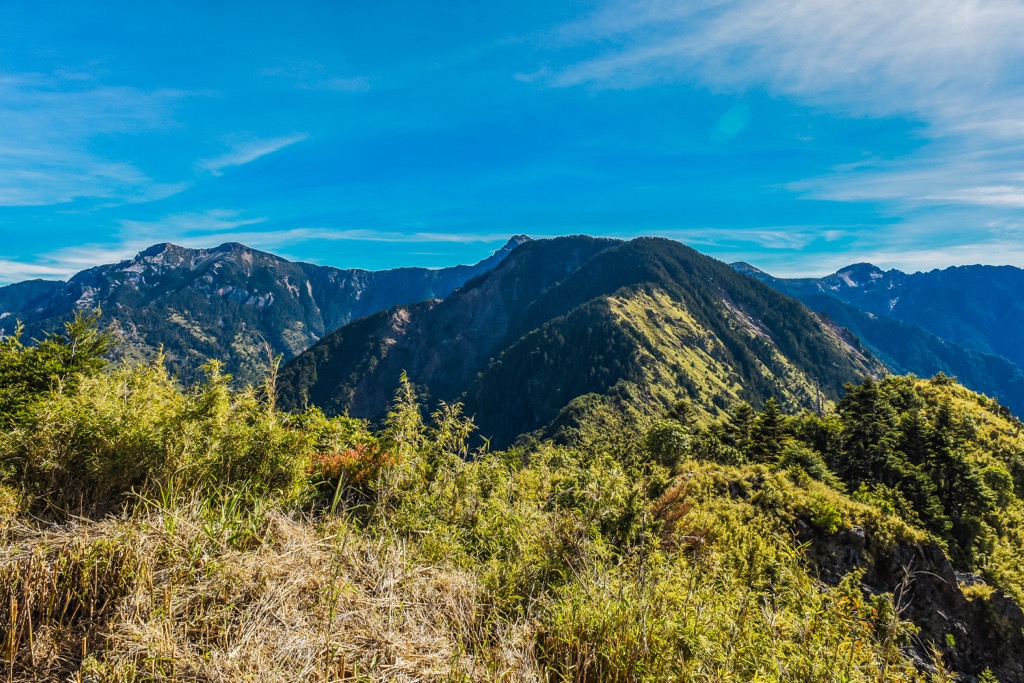
Although Yuli is situated in Taiwan’s outback, its land overlaps other established areas. It shares borders with Danda Major Wildlife Habitat (丹大野生動物重要棲息環境), Fuyuan National Forest Recreation Area (富源國家森林遊樂區) to the north, and Yuli Wildlife Sanctuary Core Area (玉里野生動物保護區 核心區) to the south. Another area of interest is the Huadong Coastal Reserve (花東沿海保護區) to Yuli’s east.
Yuli’s peaks belong to the Central Mountain Range (中央山脈), known for its signature high mountains. The longest massif in Taiwan, the Central Mountain Fange spans a linear 260 km (161 mi). Also, this sierra holds Taiwan’s highest peak, Yushan (玉山), measuring 3,952 meters (12,966 ft).
An intertwining mixture of phyllite, slate, limestone and marl comprise Yuli’s mountain rock. The geological composition originates from the Tertiary Period’s sub-metamorphic stone.
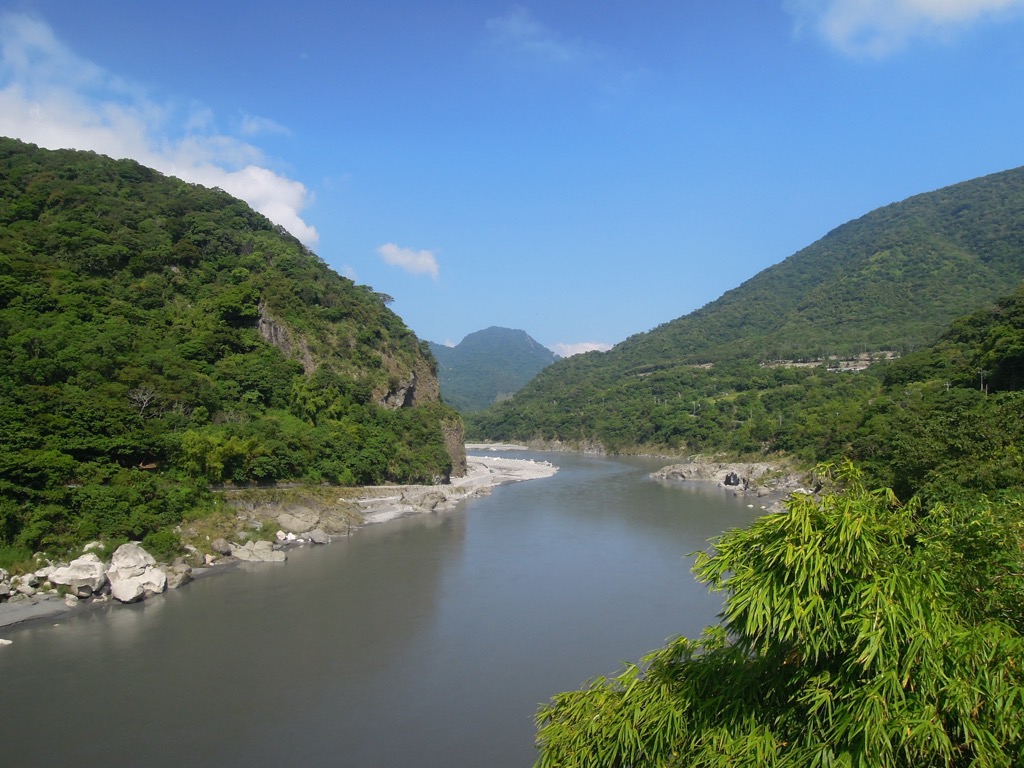
Taiwan fir and Yushan juniper were the first protected plant species in Yuli Wildlife Sanctuary Buffer Zone. These coniferous trees grow in high elevation forests between 2,500 to 3,000 meters (8,202 to 9,843 ft). Taiwan hemlock and two-leaf pine are other dominant softwoods that thrive in the high mountain woodlands.
In lower elevations, a coniferous and broadleaf mixed forest grows, featuring Taiwan red cypress, maple and oak. Ground cover plants, such as ferns and the Taiwan creeping berry, are a striking addition to the pathways.
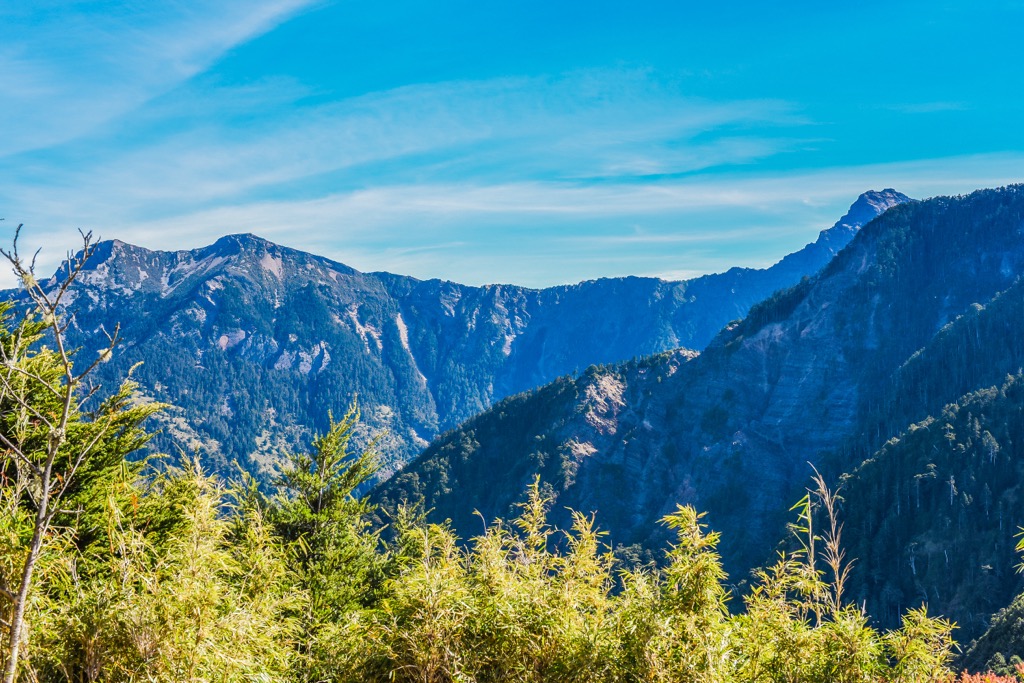
The wildlife is varied and features some protected animal species. The clouded leopard is one such example of conservation wildlife. Taiwan macaques and mountain goats comprise some of the 38 mammal groups of Yuli.
Birds are frequent in Yuli’s high mountain forests, where 61 bird types are on record. Some of Yuli’s rare fowls are the emperor pheasant, blue-bellied pheasant, and the bear eagle.
The Bunun tribe once inhabited Yuli’s mountainous area. The indigenous people lived in hillside homes at elevations between 500 to 1,500 meters (1,640 to 4,921 ft).
Known as die-hard warriors who faced outsiders with hostility, the Bunun people were one of the last groups to be controlled by the Japanese. The Japanese forced them to relocate from their mountain residence to a policed area where the Bunun were under constant surveillance.
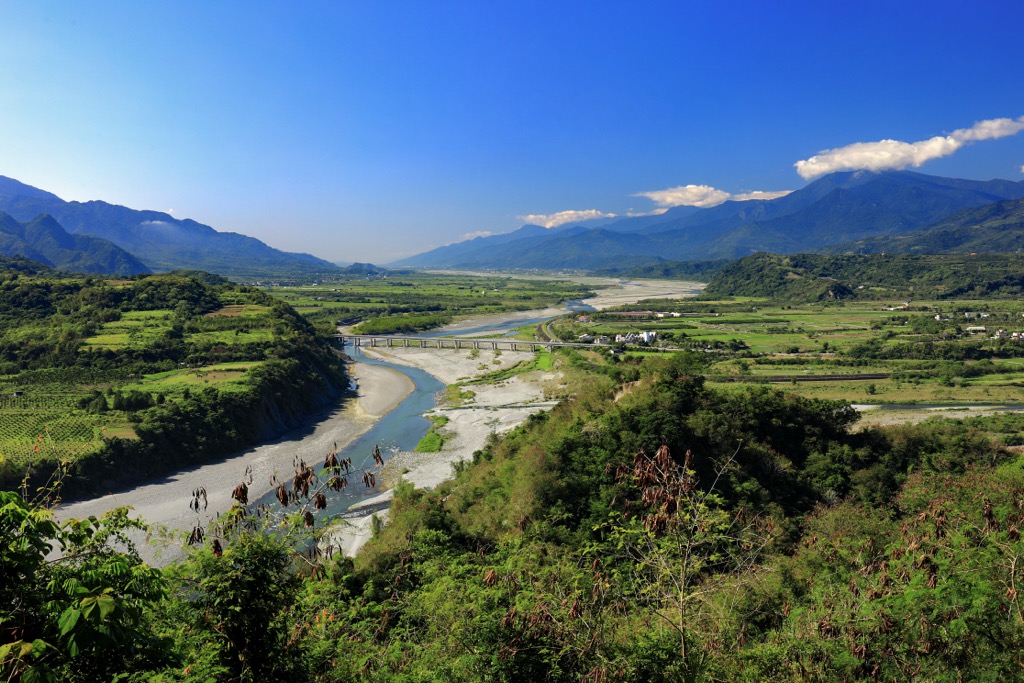
Nearby Yuli Wildlife Sanctuary is the the Wuhe Stone Pillars located in Ruisui Township (瑞穗鄉). These Neolithic ancient rock slabs predated 3,000 years ago. Standing facing each other, the height and weight of the rock are astronomical. They measure 6 and 4 meters (20 and 14 ft) and weigh 12 tons and 10 tons, respectively.
We have hand-picked the most scenic hiking trails and areas in and around Yuli Wildlife Sanctuary Buffer Zone for you. They are:
The Central Mountain Range’s lofty, high passage is divided into thirds. The South Third Section is the most remote and isolated mountainous region of crumbling terrain, collapses, and sharp cliffs.
The total journey spans 104 km (65 mi) and connects 14 peaks. Beginning in the southeast, Lulilaloushan is the first peak on the climbing itinerary. Some important mountains you will summit are Danda Shan, Neiling’er Shan, Dongjudashan (東郡大山), and Dongluandashan (東巒大山).
The South Third Section Hiking Trail offers many challenges. This trek is only for the adventurous and brave with unspent energy stores. Intense gradients, loose rocks, and constant clambering create a physical test for hikers.
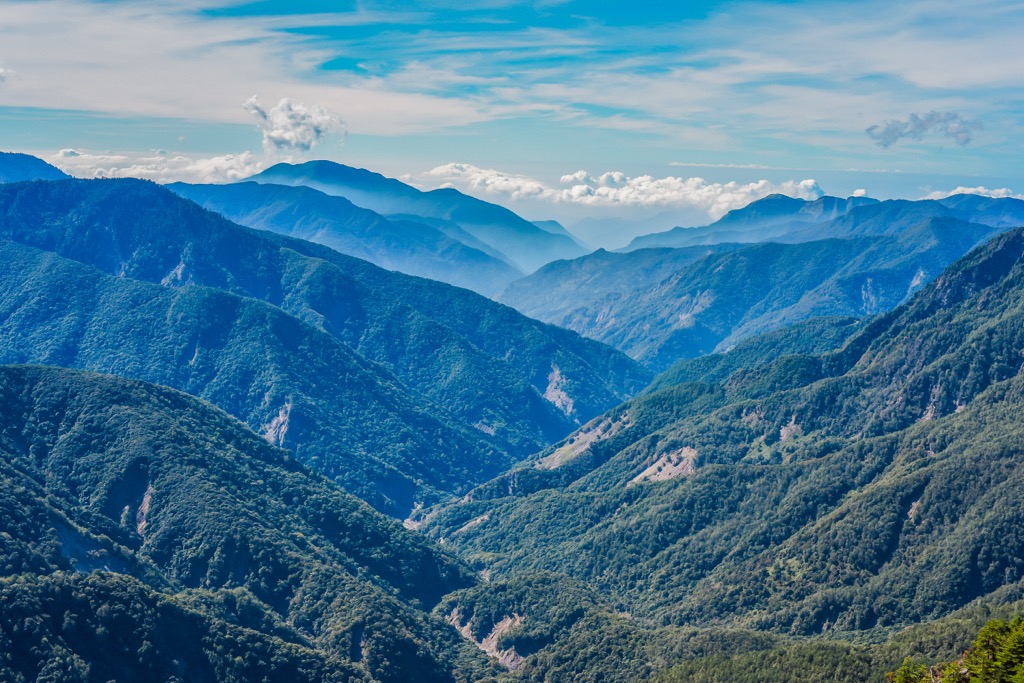
Despite its notoriously brutal nature, the South Third Section offers unrivalled beauty. A constant cloud cover bathes your surroundings in a light, fluffy veil. From the top of Taiwan’s highest mountains, a rippling network of peaks pierce the sky and stretch for miles. Yushan, Taiwan’s tallest hill, is visible from all perspectives.
Another highlight of the trail is the presence of wildlife and flourishing plant life. Spot Taiwan sambar deer grazing on the mountain meadows and macaques lazing in the sun. Crystal orchids and foxglove bloom along the path. The dense alpine forests of Taiwan fir are majestic and lush.
Situated nearby to Yuli Wildlife Sanctuary Buffer Zone is the Yushan Peaks Hiking Trail. Taiwan's tallest peak is the inspiration behind the name Yushan National Park. It also inspires many locals and international visitors to place scaling Yushan on their bucket lists.
When climbing Yushan, you can go the express route heading straight to Yushan Main Peak. Those wanting a detour have plenty of options as the saddle connects Yushan's many peaks.
Starting from Tataka Saddle, the journey begins. Once you reach Paiyun Lodge, the highest residence in Taiwan at 3,402 meters (11,161 ft), you can detour from the main track to Yushan West Peak (玉山西峰). A 2.2 km (1.4 mi) path of careful balance over narrow ridgelines overgrown with arrow bamboo (Pseudosasa japonica) leads you to the summit.
To reach Yushan Main Peak, keep on the central path from Paiyun Lodge, where a steep, sheer cliff awaits. While only 2.4 km (1.5 mi) separates you from Taiwan's tallest point, the elevation rises 500 metres (1,640 ft), so it's a constant, strenuous climb.
From Yushan Main Peak, a vision of grandness encircles you. Yushan's surrounding hills stand tall and supreme, guarding Taiwan's prime peak. Yushan East Peak (玉山東峰) lies 1.2 km (0.7 mi) ahead, a tempting prospect for many ambitious hikers.
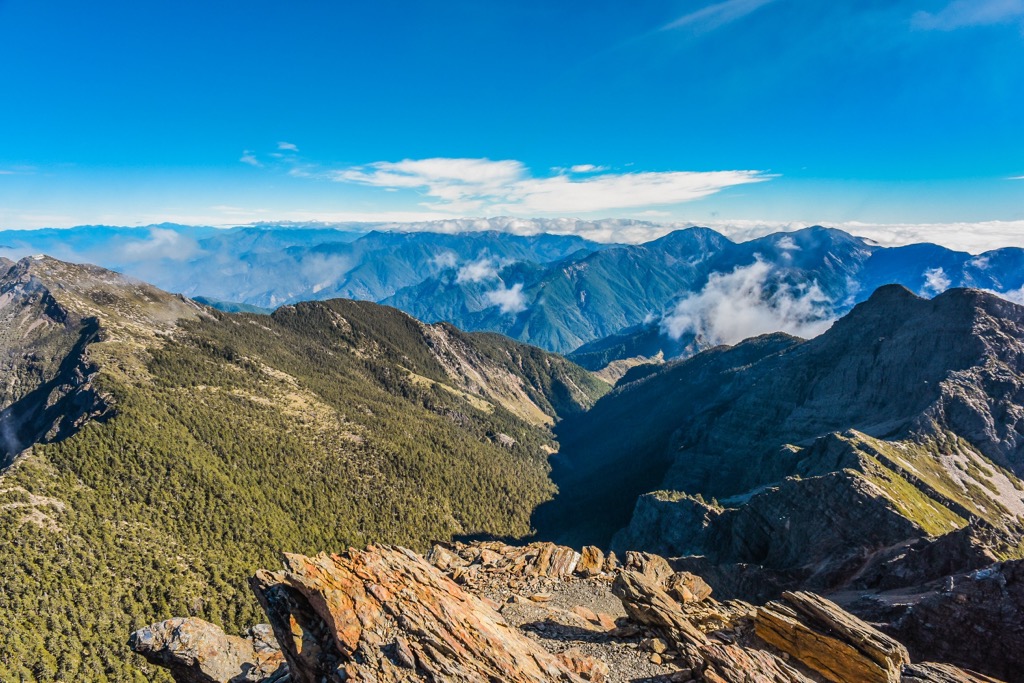
For the best view of Yushan Main Peak, head to Yushan North Peak (玉山北峰). A 2.4 km (1.5 mi) hike from the summit leads you down a cliff, where the path then rises towards Yushan North Peak. At 3,858 meters (12,657 ft), the highest building in Taiwan, the weather station, rests on the pinnacle.
Finally, Yushan South Peak (玉山南峰) lies the furthest away at 2.5 km (1.6 mi) from the Main Peak. First, descend the track until you reach Paiyun Lodge. Then head south towards Yushan's friendliest and easiest peak.
Once you've ascended Yushan South Peak, you can carry on your journey towards the connecting hills of Lu Shan (鹿山), Xiaonanshan (小南山), and Nan Yushan (南玉山). Alternatively, you can head back to Paiyun Lodge and descend the trail.
North of Yuli Wildlife Sanctuary is the low-lying valley of Fuyuan National Forest Recreation Area. Fuyuan Forest is a magical fertile kingdom of flourishing leafy woods and abundant butterflies.
Wander through the leafy trails as you immerse yourself in a refreshing forest bath. Fuyuan’s lush camphor grove, the largest in Taiwan, emits phytoncide, the chemical responsible for lowering stress and creating clarity and focus. Breathe in the wooden scented fresh air and admire the dense emerald foliage.
To enhance relaxation, bathe in the thermal springs of Butterfly Valley Hot Springs. Feel your tension evaporate together with the 140°F (60°C) water’s steam. During daylight hours, enjoy the vibrant nature while birdsong serenades you to a restful state. At night, look out for the illuminating glows from fireflies.
Along Taiwan’s east coast are two beautifully scenic parallel areas. The Huadong Coastal Reserve and the Huadong Valley (花東縱谷) display different formations in Hualien’s remote backcountry.
The Huadong Coastal Reserve stretches between Hualien City (花蓮市) and Taitung City (臺東市), promoting the finest beaches and coastal rock formations. Next to this linear passage is the Huadong Valley, wedged between the steep Central Mountain Range and the gentler Hai’an Range (海岸山脈).
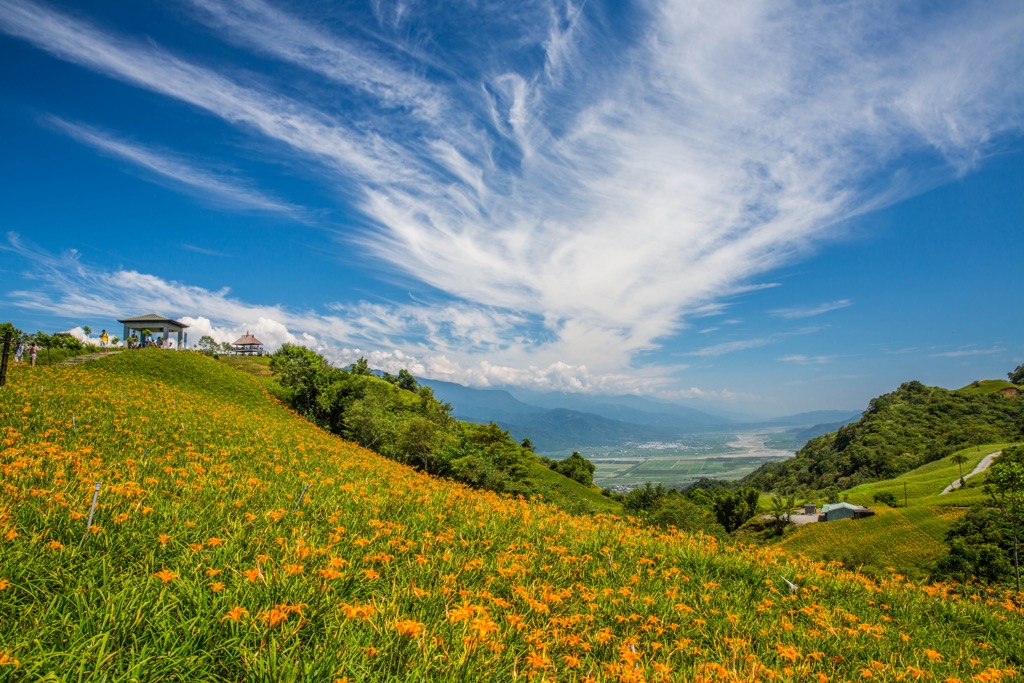
One of the Huadong Coastal Reserve’s striking rock formations is Baxiandong (八仙洞). The fierce Pacific Ocean’s waves eroded and weathered eight caves into the rock cliff. Steeped in legend and folklore, locals rever this spot and created a Buddhist shrine in this vacant space.
Or, head inland to the Huadong Valley. To gain a splendid view of the valley below, climb Luishishishan (六十石山). In August and September, the hillside meadow turns ablaze with orange daylilies. You can also observe the undulating flow of surrounding peaks from the summit.
Situated in the lower elevation of Yuli’s hills is the Honye Hot Spring (紅葉溫泉). This well-known resort was established during the Japanese Occupation Era. Thus, the red eave buildings and the interior featuring tatami mats are quintessentially Japanese.
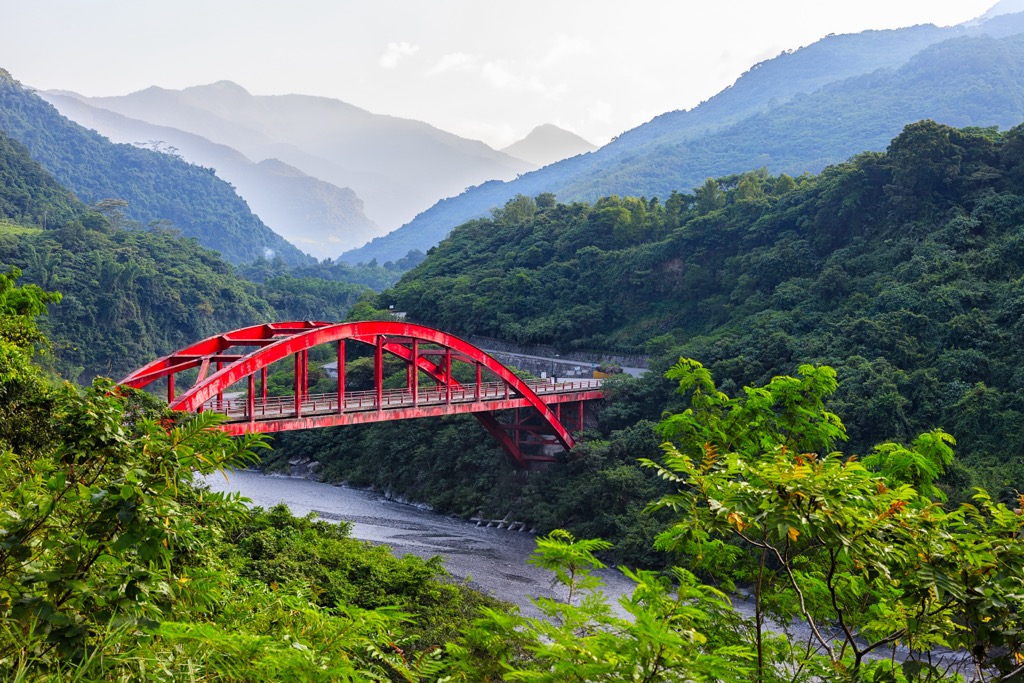
The steaming 118°F (48°C) water is invitingly warm. The water fused with sodium bicarbonate minerals makes your skin feels smooth and soft. With the Central Mountain Range within view from the pools, feast your eyes on the dramatic landscape before you.
A magnet for daredevils and adrenaline-lovers, the Xiuguluan River’s (秀姑巒溪) wild rapids take you on a fast, bumpy ride. Whitewater rafting is a popular activity on eastern Taiwan’s longest stream.
Visit after heavy rains to increase the intensity of the forceful waves. Dare to journey along the 24 km (15 mi) course featuring 20 rapids that drop 65 meters (213 ft). An expert will guide you along the Xiuguluan River, so fear not and relish the thrilling expedition.

Ruisui Township and Yuli Township (玉里镇) are the two closest and most convenient places to stay near Yuli Wildlife Sanctuary Buffer Zone. While small in area and population, the landscape is beautiful and there are plenty mesmerizing nature spots to admire.
In the heart of Taiwan's nowhere land lies Ruisui Township, a village that, surprisingly, offers many great attractions. While remote in location, Ruisui Township is a popular pitstop for travelers visiting the Huadong Valley or driving along the Huadong Coastal Reserve.
After a long day of driving to Ruisui, take a breather and enjoy the wide open spaces of Ruisui Ranch. Stretch your legs and stroll on the grassy meadows with views of grazing livestock nearby. To escape the Taiwan heat, head inside and cool down with a locally made ice cream. Other dairy products such as cheese, milk, and yoghurt are available.
For the ultimate day of channeling your inner calm, dip into the sizzling thermal waters of Ruisui Hot Springs. Relax under the sun in this open-air hot spring enriched in chloride carbonate and iron. The mineral quality heals skin ailments and alleviates arthritis. The 118°F (48°C) temperature loosens your tense muscles and soothes you into a relaxed state.
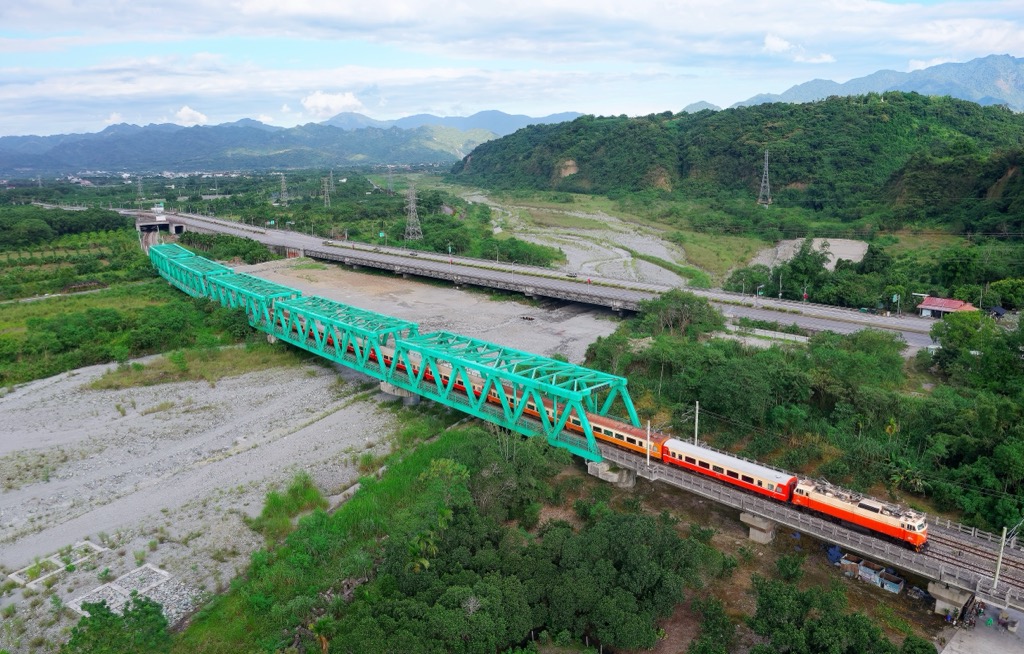
Finally, visit the Wuhe Tea Plantation to aid your newfound serenity and sample their many herbal brews. Wander the neatly planted rows of tea shrubbery and inhale the field's scented aroma. Wuhe Tea Plantation is internationally recognized, as its Honey Peach Black Tea received a gold medal at the 2006 World Tea Awards.
South of Ruisui, and equally in Taiwan’s backcountry, is the Bunun village of Yuli. Another well-visited place along the Huadong Valley, Yuli, is an underrated gem.
You can stand over the junction of the Eurasian and Philippine Sea Plates on Yuli Bridge here in Yuli. The collision of these two plates created Taiwan’s land millions of years ago, and information boards supply you with the geological history of Taiwan. While deeply educational, the views from Yuli Bridge are incredibly scenic over the picturesque Huadong Valley.
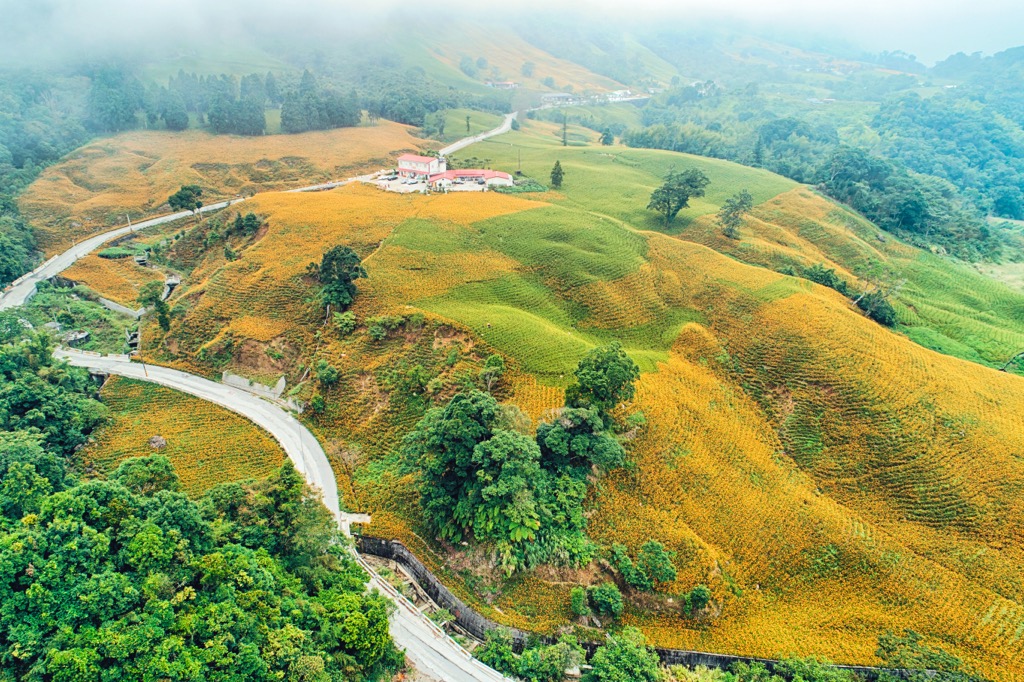
Nearby to Yuli is the captivating Nanan Waterfall. Near the leafy Walami Trail of Yushan National Park, Nanan Waterfall is set in a dense green grove that shades the cool, damp area. Delight in watching the 50 meter (164 ft) cascade crashing over the cliff, creating a thunderous roar of foamy water.
Finally, for an adventurous trek, hike to the mountainous Wulu Village. This Bunun settlement resides at an elevation of 2,700 meters (8,858 ft) in Yuli’s hills. Constant fog descends over the hillside of green pastures and emerald forests. In springtime, cherry blossoms bloom, adorning the mountain with romantic hues of pink.
Public transportation to Yuli Wildlife Sanctuary Buffer Zone is severely limited, therefore it is best to hire a car or scooter to reach this remote spot.
From Taiwan, take the local express train (TRA) to Hualien City. From here, drive the 58 km (36 mi) journey to Yuli Wildlife Sanctuary Buffer Zone.
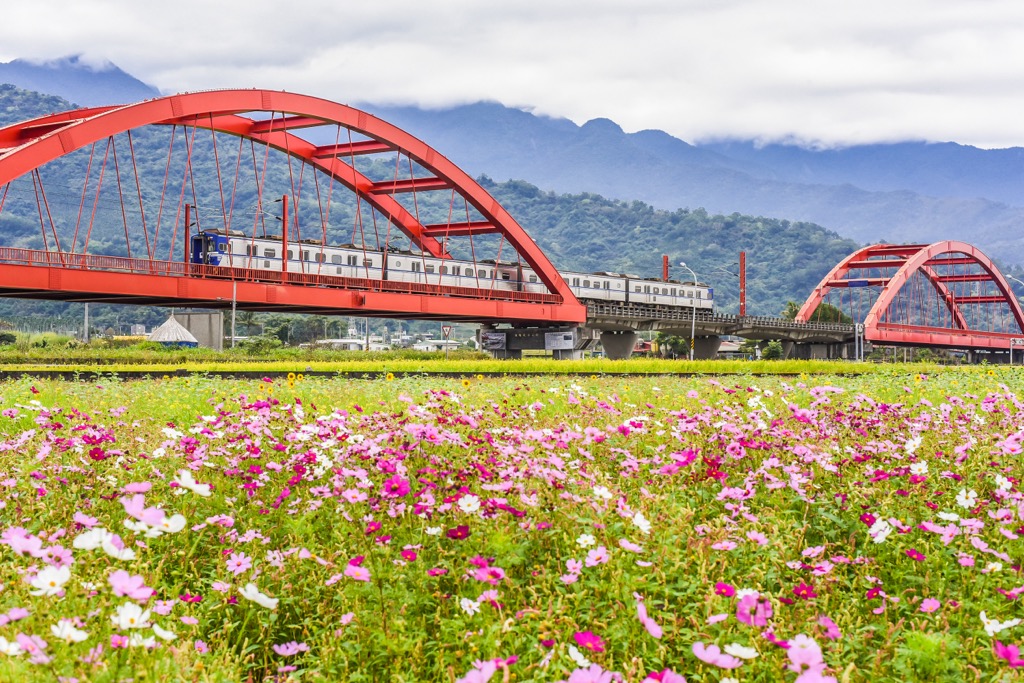
Explore Yuli Wildlife Sanctuary Buffer Zone with the PeakVisor 3D Map and identify its summits.








